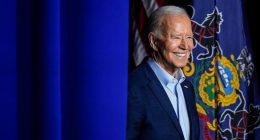
Real stewardship requires ego-free collaboration.
August 14, 2019 5 min read
Opinions expressed by Entrepreneur contributors are their own.
Let’s start with the good news: Recent Gallup survey results suggest the highest levels of employee engagement since 2000, at 34 percent. Unfortunately, that’s a far cry from a world where even the majority of employees are engaged in their jobs, so there’s still a massive amount of work to be done.
Much has been said about the importance of engagement, but most of the current literature focuses on increases in productivity and retention rate that go along with an engaged workforce. I would add that there’s another vital benefit hiding in plain sight: getting your employees to buy into your strategy and involve themselves in executing your business plan.
Related: Five Mistakes that Hinder Employee Engagement
When work gets repetitive, a disconnect inevitably forms between what you’re doing on a daily basis and why you’re doing it. According to research from McKinsey, connecting day-to-day tasks to a grand plan helps employees derive meaning from their work, but leadership can’t connect these dots once and call it a day. Instead, leaders must help employees make the connection on their own.
DTE Energy President Gerry Anderson knew his employees were disengaged, but he wasn’t pushed to action until the Great Recession hit and threatened the company’s future. With insights gained from Joe Robles, then-CEO of USAA, Anderson spearheaded a campaign to illustrate the purpose behind the power company. It didn’t happen overnight, but employees eventually bought in, and shares of DTE more than tripled over the next decade.
Anderson started his effort at DTE with a meaningful movie starring the company’s employees, but there are numerous ways to get your own team invested in your organization’s direction. Start with these three steps to cultivate buy-in and revolutionize your business:
1. Involve your team in decision-making.
Nothing will improve employee buy-in quite like giving them some skin in the game. When you include employees in the decision-making process from the outset, they don’t just watch as great concepts come and go — they’re able to add their own ideas to the mix.
Under Armour’s founder and CEO, Kevin Plank, eschews unilateral decision-making in favor of team input. When the team grew too large to include all employees in big decisions, Plank created a team of six or seven high-potential employees to offer insights. Not surprisingly, some of the most effective companies in the world, including Google, still host “all-hands” meetings with everyone in attendance. These gatherings give people opportunities to share their thoughts while keeping everyone on the same page.
Related: Good Decision Making Requires Good Data
2. Illustrate the effectiveness of your strategy.
Digital simulations are a great way to demonstrate the potential of a strategy without requiring your organization to go out on a real-life limb — yet. David Ackley, executive vice president and head of digital at professional services firm BTS, explained the thought process behind simulations in a recent op-ed, writing, “Digital business simulations not only give your whole company the opportunity to experience what great strategy execution looks like, but they also provide valuable data on how people make decisions and trade-offs in executing strategy.”
Digital simulations are a powerful way to create organizational alignment because they allow teams of any size to participate in the strategizing process. You can then gauge how employees feel about the strategy and make any necessary changes to promote more wholehearted buy-in while ensuring you have the skill sets you’ll need to pull it all off.
3. Delegate to employee strengths.
Division of labor is critical for an effective team, and it’s equally critical for employees to take on roles that correspond to their strengths. Think about a soccer team, where individuals serve as forwards, midfielders and defenders, depending on where they perform the best. In most cases, if you switch the striker and the goalie, the team might as well forfeit.
When organizations use Gallup’s CliftonStrengths to guide their values and processes, for example, they earn almost 30 percent higher profits. At least part of the improvement is thanks to a workforce that’s 15 percent more engaged. Engagement is vital, and further Gallup research illustrates that companies with a four-to-one ratio of engaged to disengaged employees achieve four times the earnings-per-share growth of their competitors.
Related: Why You Should Forget About Your Weaknesses and Focus on Your Strengths
In Conclusion….
When you’re going on a vacation to a new place, you might start by piling in the car and plugging the address into your phone’s GPS. The software is telling you how to get there, but you also have plenty of input. You’re typically presented with multiple routes to choose from, and you can elect to avoid tolls, circumvent congested areas and even plan to bypass work zones. In the same way this control helps you trust the navigation software, your employees need to have an idea of where your business plan is taking them and be able to offer some input on how to get there. When they do, they’re more likely to go along — enthusiastically — for the ride.
This article is from Entrepreneur.com









